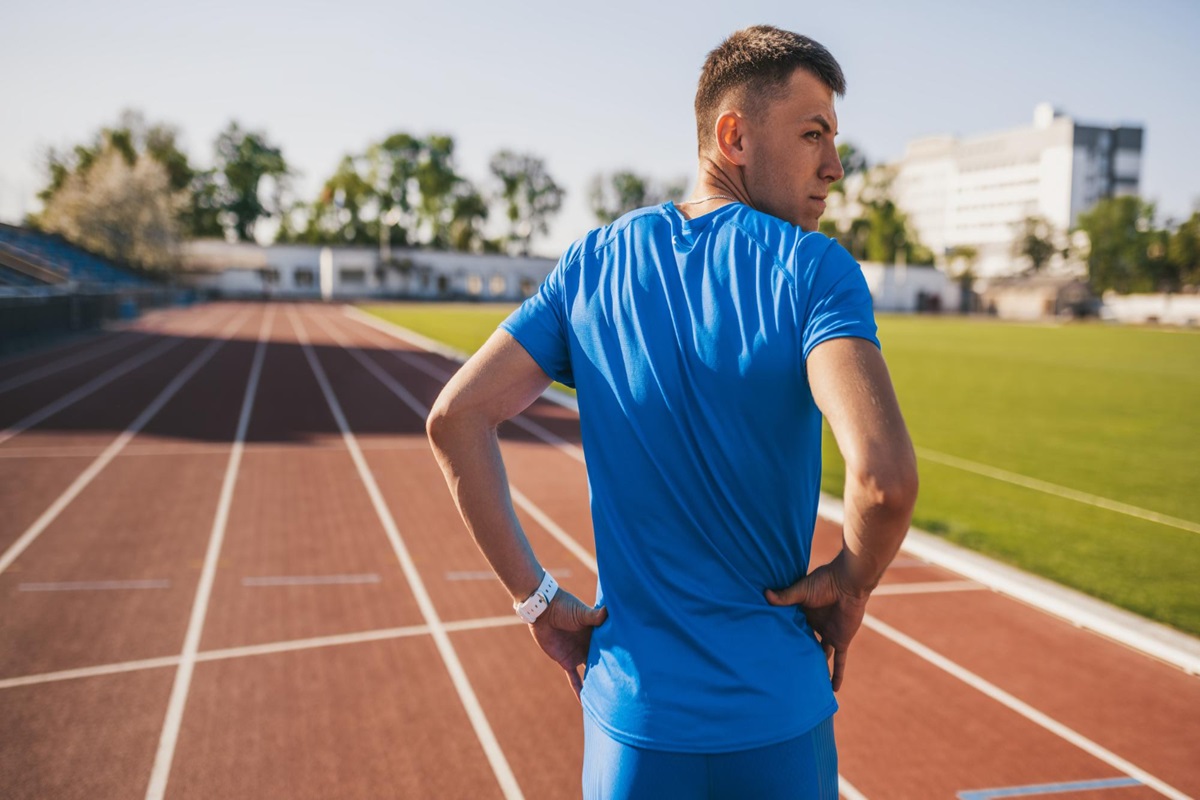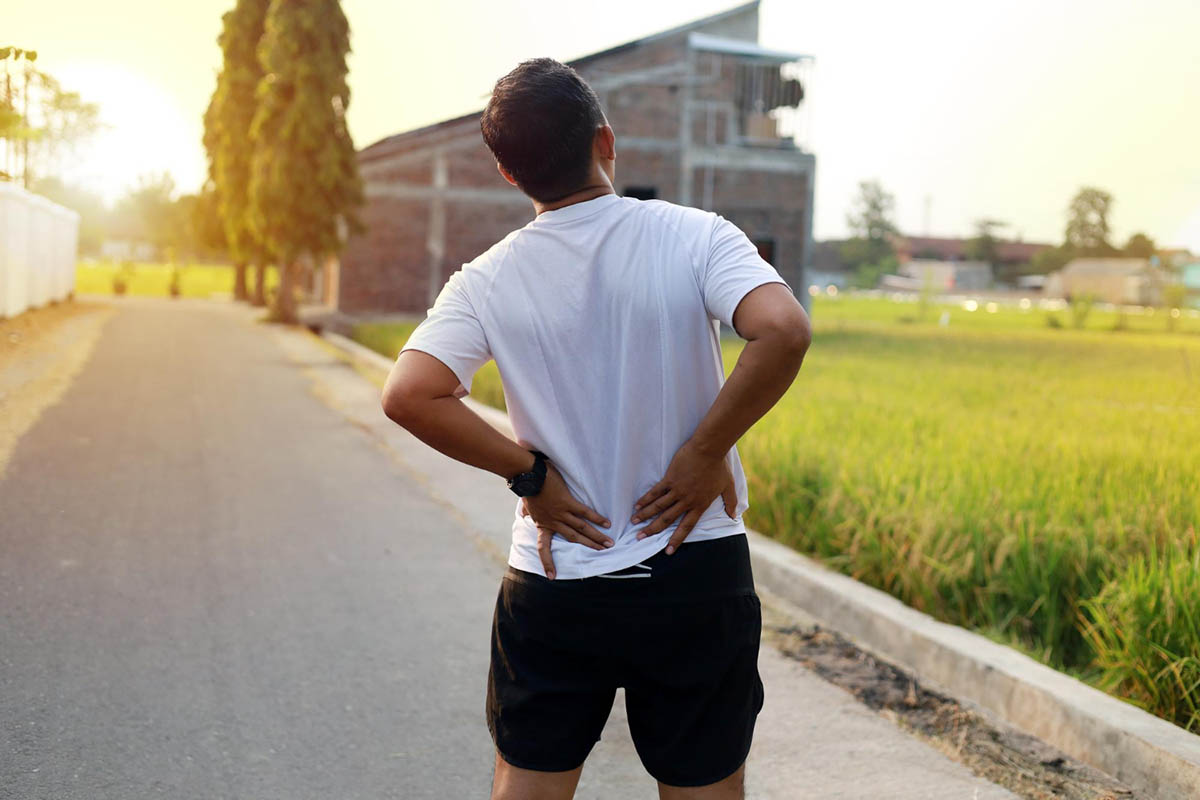Running is an excellent way to stay healthy, build stamina, and improve overall well-being. However, lower back pain after running can sideline even the most enthusiastic runner. Knowing the root causes and effective back pain treatment options for this discomfort is essential to maintain your fitness journey and avoid long-term issues. Addressing the pain early can prevent it from becoming a chronic condition, which may require more intensive treatments. By implementing the right strategies, you can recover quickly and return to running without setbacks. This comprehensive guide explores the reasons behind low back pain when running, ways to treat it, and tips to prevent it from interfering with your runs.
Anatomy of the Lower Back
The lumbar spine, also known as the lower back, is critical in supporting your upper body, facilitating movement, and absorbing impact forces. It comprises vertebrae, facet joints, vertebral discs, and surrounding muscles and ligaments. Each component must function harmoniously to maintain spinal health, but running can strain this area due to repetitive motion, impact forces, and improper biomechanics.
Causes of Lower Back Pain After Running
There are several reasons why you might experience lower back pain after running. Identifying the root causes is the first step toward finding effective solutions. Whether it’s due to muscle weakness, poor form, or external factors like footwear, understanding these causes can help you make adjustments and alleviate discomfort.
In addition, the prevalence of low back pain (LBP) in athletes is significant, with studies showing that 1% to 30% of athletes experience LBP at some point, and LBP accounts for 10% to 15% of all sports-related injuries. This data underscores the importance of addressing low back pain early, especially for those involved in regular physical activity like running. Despite their general fitness, runners are not immune to the strains that can lead to low back pain, and preventative measures can significantly reduce the risk of injury.
Weakness in the Lower Back and Gluteal Muscles
Weak intrinsic core muscles, glutes, and stabilizers can lead to core instability, forcing the lower back to bear excessive load. Over time, this imbalance can contribute to muscle strain, manifesting as tightness or soreness during or after running. Strengthening these muscle groups with targeted exercises can improve stability and reduce stress on the lumbar region.
Poor Running Posture
Poor running posture, such as slouching, overextending, or hyperlordosis (an exaggerated inward curve of the lower back), puts unnecessary pressure on the facet and sacroiliac joints (SI joint). Additionally, leaning forward too much can shift the impact forces to the lower back, increasing the risk of pain and injury. Attention to running form and maintaining proper alignment is key to avoiding these issues.
Muscle Strain
Pushing your body too hard during running can overload the lower back muscles, leading to tears, muscle stiffness, or even spasms. These strains are often the result of overexertion, overtraining, or skipping crucial steps like rest and recovery. Taking the time to warm up and gradually build intensity can prevent such injuries.
Overuse Injuries
Engaging in frequent or high-mileage running without adequate conditioning can result in overuse injuries, including vertebral disc stress, facet joint irritation, and even herniated discs. These conditions can cause persistent pain and may require medical intervention. Regularly incorporating rest days and cross-training can help prevent overuse injuries.
Footwear and Equipment
Wearing improper shoe wear or using worn-out shoes with insufficient shoe support can fail to absorb shock properly, leading to pain in the lumbar spine. Running on hard surfaces or uneven terrain without proper equipment can also exacerbate discomfort. Opting for shoes designed for your specific gait analysis and running conditions, or running on soft surfaces, can significantly reduce the strain on your back.
Pre-Existing Conditions
The repetitive running motion can aggravate chronic conditions like sciatica, spinal stenosis, and SI joint dysfunction. These issues often cause sharp or radiating pain in the lower back and legs. If you have a history of these conditions or suspect their presence, seeking guidance from a healthcare provider or undergoing a medical history review is essential to avoid further complications.
Symptoms of Lower Back Pain from Running

When experiencing low back pain when running, the symptoms can range from mild discomfort to debilitating pain. Each type of symptom provides clues about the underlying cause and its severity. Recognizing these symptoms early can help you take steps to prevent further injury and restore your running routine safely.
Although low back pain in distance runners is generally less prevalent than in other sports, it still affects a portion of the running population. The overall prevalence of low back pain in runners between the ages of 20 and 50 is relatively low, ranging from 0.7% to 20.2%, while the incidence rate is between 0.3% and 22%. These figures suggest that while low back pain may not be widespread, it remains a concern, especially when maintaining proper form and avoiding overuse injuries.
Tightness
A persistent feeling of tension in the lower back muscles is often an early indicator of strain or muscle stiffness. This can occur after intense running sessions or overtraining, especially when intrinsic core muscles are weak. Tightness may also be exacerbated by a lack of flexibility in the hip flexors or insufficient dynamic warm-up before running. Addressing tightness with gentle stretching and foam rolling can alleviate discomfort and improve mobility.
Stiffness
Restricted movement in the lumbar spine makes bending or twisting difficult, which is a common symptom of facet joint irritation or muscle imbalances. Stiffness is often most noticeable in the morning or after prolonged rest following a run. This symptom can also result from overexertion or training errors that overload the back. Incorporating mobility exercises and paying attention to stride length can help reduce stiffness over time.
Soreness
A dull, lingering ache in the lower back is usually the result of repetitive stress, improper running form, or biomechanical issues like gait abnormalities. Soreness can also stem from running on hard surfaces or uneven terrain, increasing impact forces on the lumbar spine. Proper rest and recovery, paired with the right shoe support, can help alleviate soreness and prevent it from becoming a chronic issue.
Sharp Pain
Sudden shooting pain in the lower back is often a warning sign of a more severe issue, such as a herniated disc or sacroiliac joint dysfunction. This pain may radiate to the legs, indicating nerve involvement like sciatica. If sharp pain persists or worsens, it’s essential to consult a healthcare provider for an accurate diagnosis and appropriate treatment. Ignoring sharp pain can lead to long-term complications that may require more invasive interventions, such as surgery.
How to Treat Lower Back Pain After Running
Treating lower back pain after running requires a combination of self-care, targeted exercises, and sometimes professional guidance. One effective treatment approach includes therapeutic exercises for lower back pain, which can help reduce pain, address the root causes, and strengthen the back and supporting muscles. These exercises improve flexibility, stability, and strength, thereby preventing recurrence. Adopting a multifaceted approach, including therapeutic exercises for lower back pain, ensures faster recovery, better long-term results, and a decreased likelihood of future injury.
RICE Method (Rest, Ice, Compression, Elevation)
The RICE method is a reliable first response to acute pain, especially when caused by muscle strain or overexertion. Rest allows damaged tissues to recover, while icing reduces swelling and inflammation in the affected area. Compression and elevation promote better circulation, further aiding the healing process. Combining these techniques with gentle stretching once the pain subsides can restore mobility and prevent stiffness.
Stretching & Strengthening Exercises
Targeted stretches for the hip flexors, glutes, and lower back can relieve tightness and improve flexibility, reducing stress on the lumbar spine. Incorporating core stabilization exercises, such as planks and pelvic tilts, enhances core stability and prevents further injury. Regular strength training alleviates pain and builds resilience against future episodes of muscle stiffness and strain.
Over-the-Counter Pain Relievers
Nonsteroidal anti-inflammatory drugs (NSAIDs) like ibuprofen can offer quick relief from muscle strain and inflammation, making engaging in light activity or therapy easier. However, these medications are a short-term solution and should be used sparingly. If pain persists beyond a few days or worsens, seek advice from a healthcare provider to rule out serious conditions like facet joint irritation or herniated discs.
Physical Therapy
A physical therapist can create a personalized treatment plan that addresses your unique needs, focusing on core muscle training, gait analysis, and improving running form. Manual therapy and guided exercises can alleviate vertebral disc stress and improve hip mobility, essential for runners. For advanced cases, virtual physical therapy programs or regular sessions can ensure long-term recovery and prevent recurring pain.
Preventing Lower Back Pain While Running
Preventing low back pain when running starts with proper preparation, mindful habits, and a focus on overall body strength and mechanics. If you’re already experiencing running with lower back pain, addressing the underlying causes and adopting strategies to minimize strain on your back becomes even more important. By addressing potential risk factors and making smart training choices, you can maintain a pain-free running routine while improving performance. Consistency in these practices will help keep your lumbar spine and supporting muscles healthy.
Warm-Up & Cool-Down Routines
A dynamic warm-up is essential to prepare your muscles and joints for the repetitive running motion, reducing the risk of muscle strain or stiffness. Leg swings, lunges, and pelvic tilts help activate key muscle groups and improve hip mobility. After running, a thorough cool-down with static stretches and foam rolling releases tension in the lower back muscles and prevents post-run soreness.
Proper Running Posture
Maintaining proper running form is crucial to minimize strain on the lumbar spine and surrounding structures. Keep your chest upright, engage your core muscles, and avoid overstriding, which can increase stress on your lower back. Ensuring an efficient stride length and monitoring your alignment with tools like video gait analysis can help you refine your posture and reduce the risk of injury.
Core Strengthening Exercises
A strong core provides stability and reduces excessive motion in the lumbar spine, protecting it from strain during running. Incorporating exercises like planks, side planks, and core stabilization exercises builds strength in the intrinsic core muscles. Consistent core training prevents core instability and enhances overall running efficiency and endurance.
Choosing the Right Running Shoes
Investing in supportive running shoes with adequate cushioning is key to absorbing impact forces and reducing stress on the lower back. Ensure your footwear suits your running style, gait, and terrain by consulting a specialist or undergoing gait analysis. Running a treadmill on soft surfaces like grass or trails can also lessen the impact on your lumbar spine and joints.
Gradual Training Progression
Rapidly increasing your training volume or intensity can lead to overtraining, causing fatigue and increasing the likelihood of injury. Instead, adopt a gradual approach, adding mileage or speed incrementally to allow your body to adapt. Cross-training with lower-impact activities like swimming or cycling can also strengthen supporting muscles and reduce stress on the lower back muscles, ensuring balanced development and recovery.
Exercises to Strengthen Lower Back for Running

Strengthening the lower back and its supporting muscles is essential for reducing pain, improving stability, and enhancing running performance. These exercises target key areas prone to strain, ensuring your body can handle the demands of running. Incorporating these movements into your routine can improve core stability, support your lumbar spine, and help prevent muscle imbalances.
Abdominal Exercises
Moves like planks, crunches, and sit-ups focus on strengthening the intrinsic core muscles, which play a critical role in stabilizing your spine during running. These exercises reduce core instability and enhance your ability to maintain proper posture while running. Adding variations such as weighted or bicycle crunches can further improve strength and endurance.
Deadbugs – Single-Leg Lower
This controlled exercise challenges the lumbar spine and strengthens your lower body and core coordination. The deadbug focuses on maintaining stability while moving, miming the demands of running. Start with simple movements and progress to more dynamic versions to increase difficulty as your strength improves.
Plank
The plank is a foundational exercise that engages the core, including the lower back muscles, obliques, and glutes. Holding a plank improves endurance and stability, crucial for maintaining proper running form over long distances. For added variety, try side-to-side plank or shoulder taps to activate stabilizing muscles further.
Side Plank
The side plank targets the obliques and enhances hip mobility and lateral stability, often overlooked in traditional core workouts. This exercise is especially beneficial for preventing sacroiliac joint dysfunction and strengthening muscles that support proper alignment during running. Start with shorter holds and work toward increasing your endurance over time.
Glute Exercises
The glutes play a pivotal role in stabilizing the pelvis and reducing the load on the lumbar spine. Strong glutes prevent muscle imbalances and ensure efficient movement patterns during running. They also help absorb impact forces during each stride, protecting the lower back muscles from overuse. Regular glute exercises improve overall running efficiency and reduce the risk of injuries like sacroiliac joint dysfunction.
Glute Bridges
This exercise strengthens the glutes while engaging the hip flexors and lower back. Performing glute bridges regularly improves hip extension and reduces the risk of hyperlordosis or facet joint irritation caused by poor posture.
Hip Thruster
The hip thruster is a more advanced glute exercise that provides a greater range of motion than the glute bridge. By targeting the glutes and hamstrings, this movement enhances pelvic stability and reduces strain on the lower back during high-impact activities like running. Add resistance bands or weights to increase intensity and build strength progressively.
When to Seek Professional Help
If the pain persists for over a few weeks, worsens over time, or is accompanied by symptoms like numbness or radiating pain, consult a healthcare professional. They can diagnose underlying issues and recommend advanced treatments.
At Austin Manual Therapy, our team of experts is here to provide comprehensive back pain treatment for all levels of athletes. Whether you’re dealing with chronic pain or a recent injury, we use manual therapy and personalized care plans to address your pain at its source and promote long-term recovery. Trust our specialists to help you get back to running pain-free, improving performance and overall well-being.
Conclusion
Lower back pain after running doesn’t have to derail your fitness goals. You can enjoy pain-free runs by understanding the causes, adopting preventive measures, and implementing effective treatments. If you’re wondering how to fix lower back pain from running, focus on strategies like strengthening your core, improving your posture, and choosing the right footwear. Prioritize core strength training, proper footwear, and mindful running habits for a stronger, healthier back. Consistency in these practices reduces the risk of injury and enhances your overall running performance. Remember, caring for your back is an investment in your long-term health and athletic success.
FAQs
Why does my lower back hurt after I run?
Lower back pain after running can result from core instability, poor running posture, or muscle strain. Addressing these factors with targeted exercises, proper alignment, and gradual training progression can reduce discomfort. Additionally, factors like unsuitable footwear or overtraining may contribute to pain.
What are signs of a weak lower back?
Signs include frequent muscle stiffness, difficulty with hip mobility, and challenges maintaining proper running form. A weak lower back may also cause compensatory movements in other body parts, leading to imbalances or injuries.
How do I stop my lower back from hurting when I run?
Focus on dynamic warm-ups, strengthening your core muscles, ensuring adequate shoe support, and incorporating lower-impact activities like swimming or cycling into your routine. Consider running posture and consult a video gait analysis expert to refine your form.





